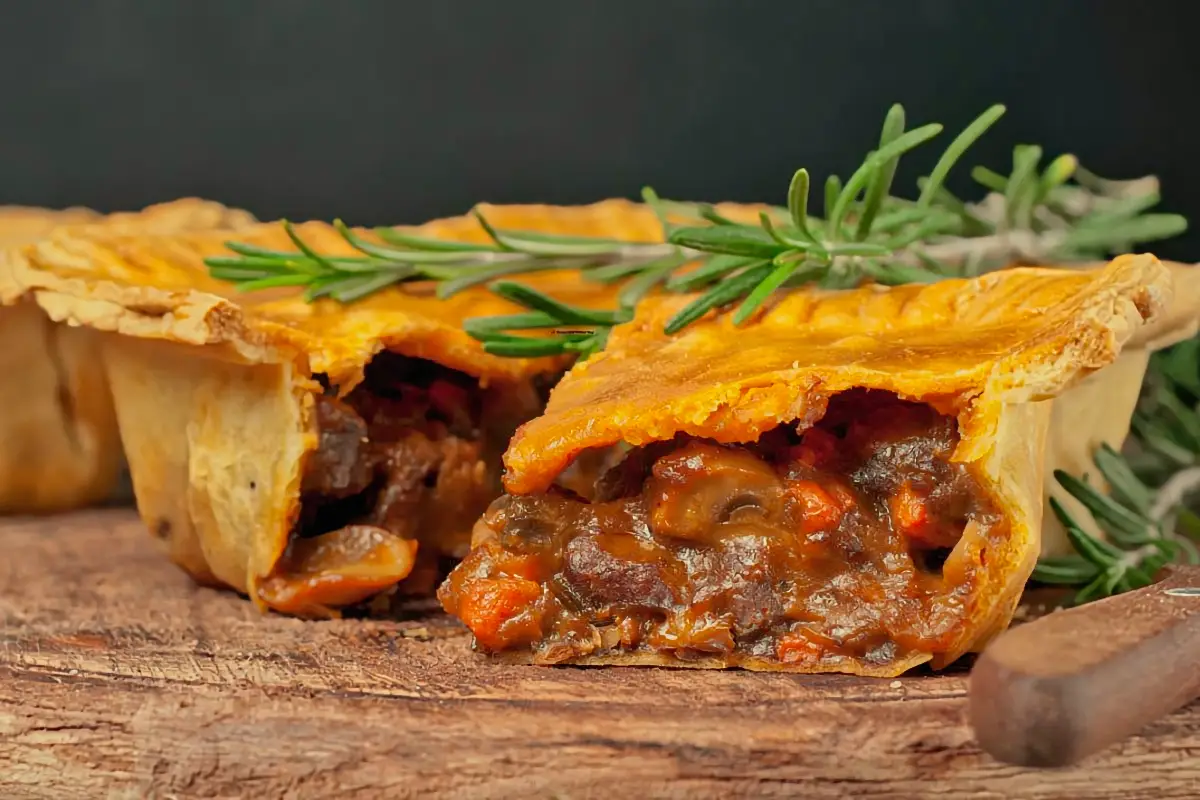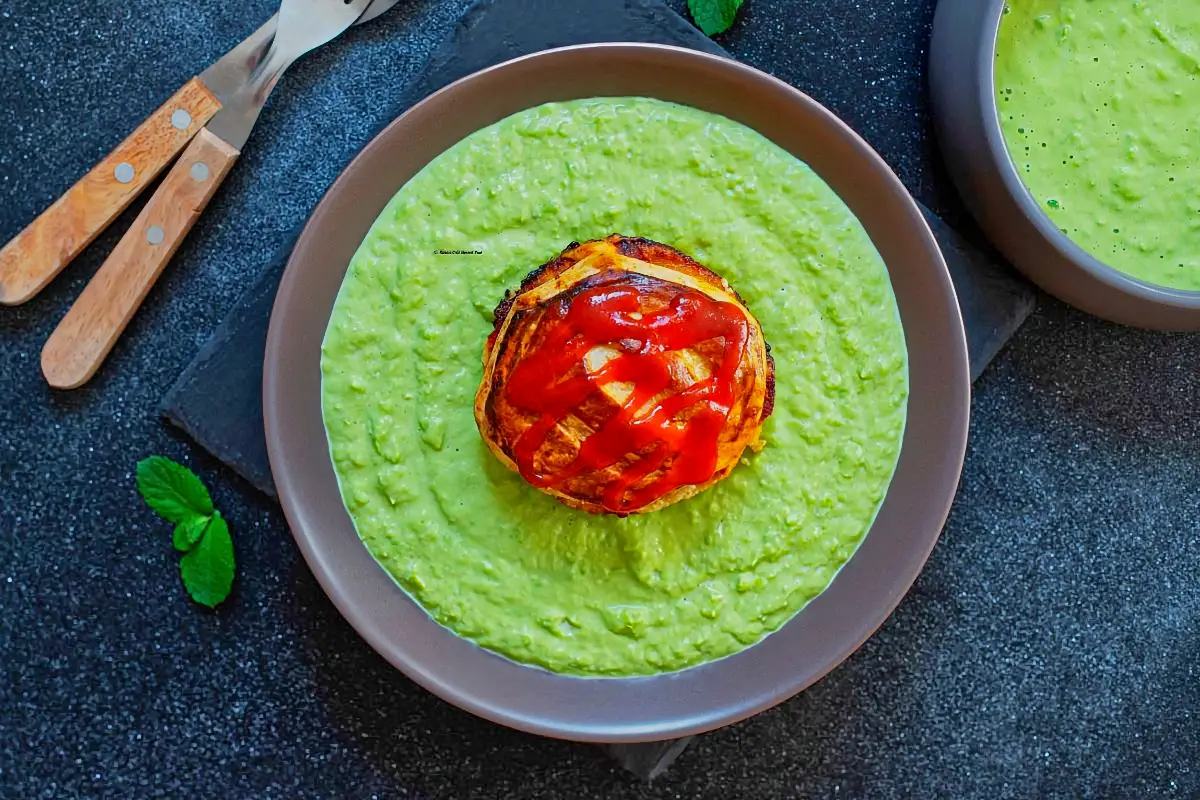Embark on a culinary adventure as we delve into the secrets of crafting the iconic Australian pie. With its golden-brown crust and savory fillings, this beloved dish has captivated taste buds for generations. From traditional meat pies to innovative vegetarian and seafood creations, our comprehensive guide will empower you to master the art of pie-making and impress your family and friends with your culinary prowess.
Join us as we explore the essential ingredients, pastry techniques, and filling variations that define the Australian pie. Whether you’re a seasoned baker or just starting your culinary journey, our step-by-step instructions and expert tips will guide you towards creating the perfect pie every time.
Ingredients

The quintessential Australian pie, a culinary icon, is a symphony of flavors encased in a golden-brown pastry. To recreate this masterpiece, gather the following essential ingredients:
Flour
- 3 cups plain flour, plus extra for dusting
Butter
- 125g cold unsalted butter, cut into small cubes
Meat
- 1kg beef mince
- 1 brown onion, finely diced
- 2 cloves garlic, crushed
- 1 tablespoon Worcestershire sauce
- 1 tablespoon tomato paste
- 1 teaspoon dried oregano
- 1 teaspoon dried thyme
- 1/2 cup beef stock
- 1/4 cup chopped fresh parsley
Vegetables
- 1 large carrot, peeled and diced
- 1 large potato, peeled and diced
- 1 cup frozen peas
Pastry
Australian pies are known for their flaky, buttery pastry. There are two main types of pastry used in Australian pies: shortcrust pastry and puff pastry.
Shortcrust pastry is a simple pastry made from flour, butter, and water. It is a versatile pastry that can be used for both sweet and savory pies. Puff pastry is a more complex pastry made from flour, butter, and water that is rolled and folded several times to create a flaky texture.
Puff pastry is used for pies that require a light and airy crust, such as fruit pies.
Making Shortcrust Pastry
- In a large bowl, combine the flour and salt.
- Cut the butter into small cubes and add to the flour mixture. Use your fingers to work the butter into the flour until it resembles coarse crumbs.
- Add the water, one tablespoon at a time, and mix until the dough just comes together. Do not overmix.
- Form the dough into a ball, wrap it in plastic wrap, and refrigerate for at least 30 minutes before rolling out.
Rolling Out and Shaping the Pastry
- On a lightly floured surface, roll out the pastry to a thickness of about 3mm.
- Use a pie dish or tart pan as a guide to cut out the pastry. You will need two circles of pastry, one for the bottom crust and one for the top crust.
- Place the bottom crust in the pie dish or tart pan and trim the edges. Fill the pie with your desired filling.
- Place the top crust over the filling and trim the edges. Crimp the edges to seal the pie.
- Bake the pie according to the recipe instructions.
Filling
The filling is the heart of an Australian pie. Traditional fillings include:
- Meat: ground beef, lamb, or pork, often with onions, gravy, and herbs
- Vegetable: peas, carrots, corn, and onions
- Seafood: tuna, salmon, or prawns
Variations include:
- Curried meat or vegetable fillings
- Cheese and bacon fillings
- Sweet fillings such as apple or cherry
Get creative and experiment with different flavors and ingredients to create your own unique pie filling.
Meat Fillings
For a classic meat filling, brown 500g of ground beef in a pan. Add 1 chopped onion and cook until softened. Stir in 1 tablespoon of flour and cook for 1 minute. Gradually add 1 cup of beef stock, stirring constantly.
Bring to a boil, then reduce heat and simmer for 15 minutes. Season with salt and pepper to taste.
Vegetable Fillings
For a simple vegetable filling, combine 1 cup of frozen peas, 1 cup of diced carrots, and 1 cup of chopped onions in a bowl. Season with salt and pepper to taste.
Seafood Fillings
For a seafood filling, combine 1 cup of flaked tuna, 1 cup of cooked prawns, and 1 cup of chopped celery in a bowl. Season with salt, pepper, and lemon juice to taste.
Assembly
Assembling the pie is a crucial step that requires precision and attention to detail. By following the proper techniques, you can ensure a well-sealed and evenly cooked pie.
First, place one sheet of pastry on a lightly floured surface. Spoon the filling evenly over the pastry, leaving a 2-3 cm border around the edges. Brush the edges of the pastry with water or egg wash.
Crimping and Sealing the Edges
Crimping and sealing the edges of the pie is essential to prevent leaks and ensure a golden crust. There are various crimping techniques you can use, such as the classic thumb and forefinger crimp or the more decorative fork crimp.
To crimp the edges, fold the top sheet of pastry over the filling, aligning it with the bottom sheet. Use your fingers or a fork to press the edges together, creating a tight seal. Trim any excess pastry around the edges.
Ventilation Holes
Ventilation holes allow steam to escape during baking, preventing the pie crust from becoming soggy. Use a sharp knife or skewer to make several small holes in the top of the pie crust.
Baking
The baking stage is crucial for achieving a perfect Australian pie. The ideal temperature and time ensure the filling is cooked through while the pastry becomes golden and flaky.
Baking Temperature and Time
Preheat your oven to 180-200°C (350-400°F) for fan-forced ovens or 190-210°C (375-425°F) for conventional ovens. Bake the pies for 25-35 minutes, or until the pastry is golden-brown and the filling is bubbling.
Golden-Brown Crust
To achieve a golden-brown crust, brush the pastry with an egg wash (1 egg beaten with 1 tablespoon of milk) before baking. You can also sprinkle sesame seeds or flaky salt on top for extra flavor and texture.
Signs of a Well-Baked Pie
- The pastry is golden-brown and flaky.
- The filling is bubbling and cooked through.
- The pie feels firm to the touch but gives slightly when pressed.
- The juices run clear when you insert a skewer into the center.
Serving
Australian pies are a versatile dish that can be enjoyed in various settings. They can be served as a main course, a snack, or a side dish.
Traditionally, pies were served hot with a dollop of tomato sauce or gravy. However, modern variations include serving pies with a variety of accompaniments, such as mashed potatoes, peas, or salad.
Reheating and Storing
Australian pies can be reheated in the oven or microwave. To reheat in the oven, preheat the oven to 180 degrees Celsius (350 degrees Fahrenheit) and bake the pie for 15-20 minutes, or until heated through.
To reheat in the microwave, place the pie on a microwave-safe plate and heat on high for 1-2 minutes, or until heated through.
Pies can be stored in the refrigerator for up to 3 days or in the freezer for up to 3 months.
Variations
The humble Australian pie has inspired countless regional variations, each with its own unique character and charm. From the classic beef pie to the innovative vegetarian and seafood creations, there’s a pie for every taste and occasion.
Shapes and sizes vary widely, from the traditional round pie to the elongated oval shape of the “football pie.” Fillings are equally diverse, ranging from traditional meats like beef, lamb, and pork to seafood, vegetables, and even fruit.
Innovative and Creative Pie Recipes
In recent years, Australian pie makers have pushed the boundaries of creativity, experimenting with new and innovative recipes. Some popular variations include:
- The “Lamington Pie”: A sweet and savory combination of lamington sponge cake and raspberry jam, topped with a chocolate ganache.
- The “Pavlova Pie”: A light and fluffy meringue pie filled with whipped cream and fresh fruit, topped with a crispy meringue crust.
- The “Aussie Rules Pie”: A football-shaped pie filled with a hearty combination of beef, bacon, and cheese.
Last Word

As you savor the last bite of your homemade Australian pie, let the flavors linger and appreciate the joy of creating a culinary masterpiece. Whether you prefer the classic flavors of meat and gravy or the vibrant tastes of vegetables and seafood, the Australian pie offers endless possibilities for exploration and creativity.
So gather your ingredients, roll up your sleeves, and embark on a delightful journey into the world of pie-making. Happy baking!
FAQ
Can I use a different type of flour for the pastry?
Yes, you can use plain flour, bread flour, or a combination of both. However, using strong flour with a higher protein content will result in a tougher crust.
What is the best way to achieve a golden-brown crust?
Brush the pastry with an egg wash (beaten egg) before baking. This will create a shiny, golden-brown crust.
How can I make sure the filling is cooked through?
Preheat the oven to the correct temperature before baking and use a meat thermometer to check that the internal temperature of the filling has reached 165°F (74°C).
